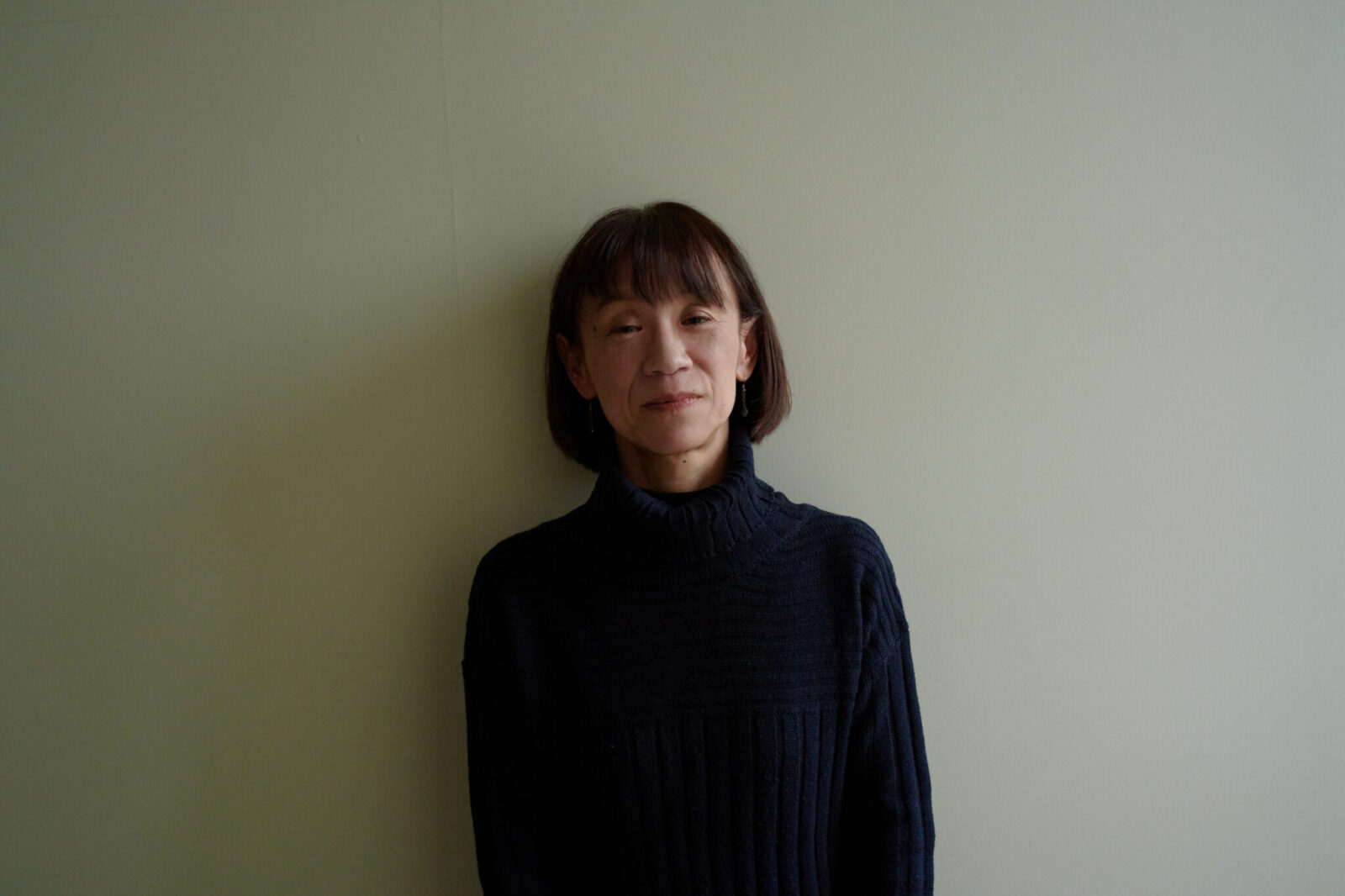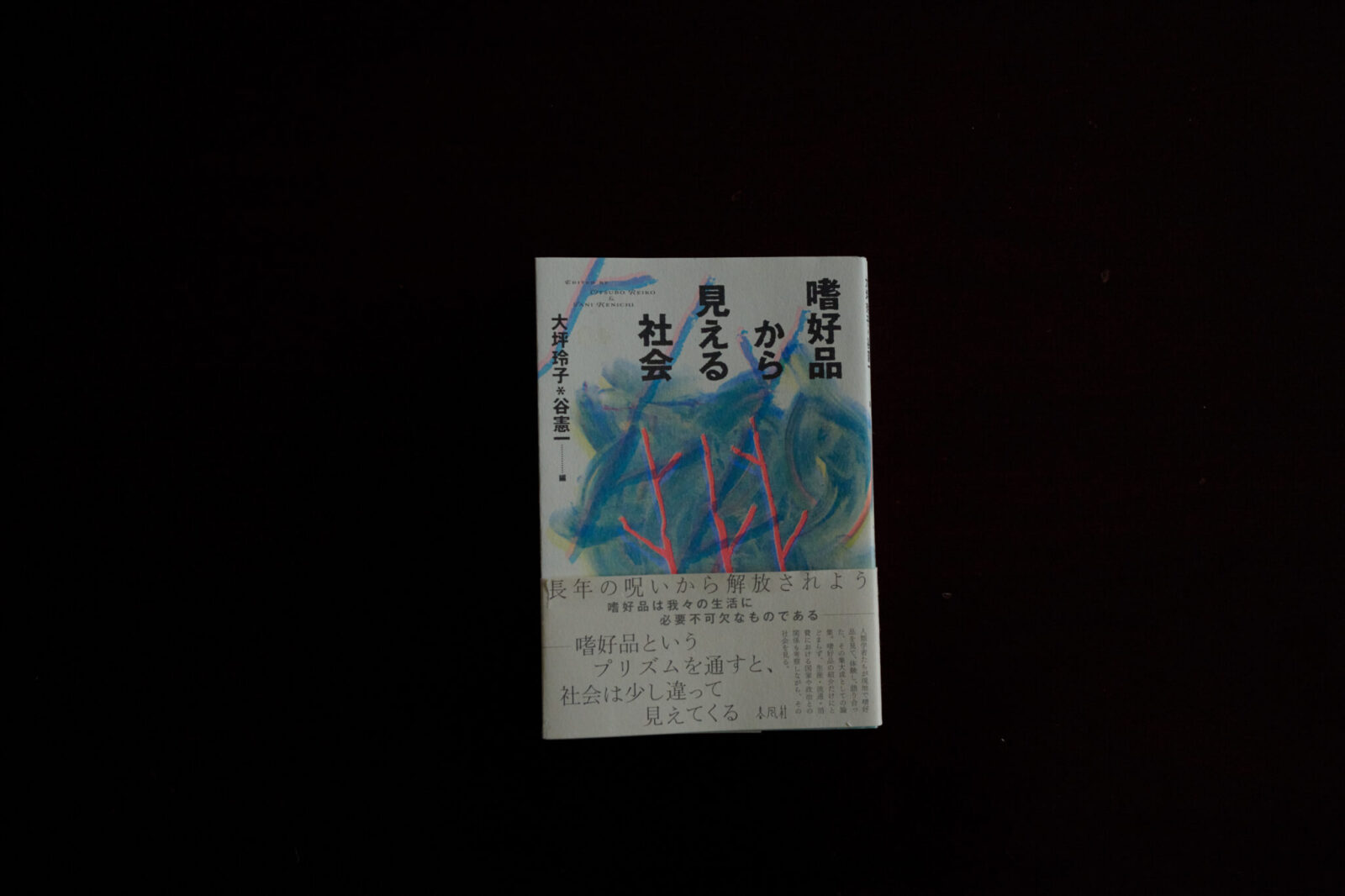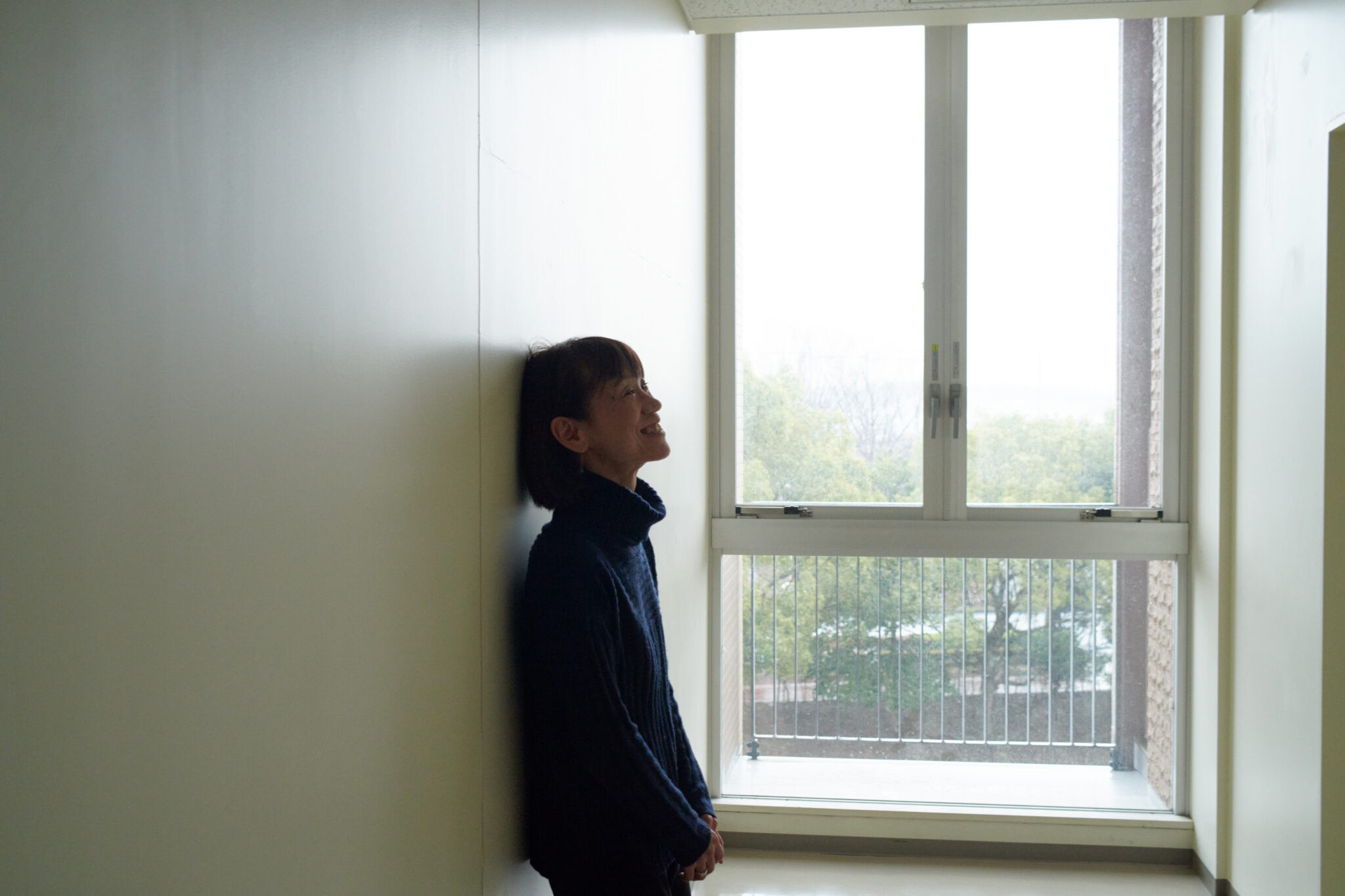“We can find indulgences (shiko) in everything around us.”
These are the words of Reiko Otsubo, a cultural anthropologist who researches “khat”, a Middle Eastern delicacy in Yemen that is known as the ultimate shikohin.
Khat is the leaves of a shrub that is native to Ethiopia. The young leaves are chewed and enjoyed as a pleasurable shikohin.
Products such as alcohol, tobacco, and coffee do not have any nutritional value, but are consumed to bring pleasure in our lives. The Kojien dictionary defines shikohin as “foods and beverages that are not intended for nutrition, but for stimulation and flavor.”
However, Otsubo points out that this definition does not suffice.
“First of all, there are very few foods and beverages that we consume solely for its nutritional value. I find it pointless to put the focus on whether or not the purpose of consuming something is for nutritional value.”
Otsubo is the author the book, Seeing Society Through Shikohin (嗜好品から見える社会) (by Shumpu Publishing, 2022), a collection of research papers written by anthropologists on the topic of shikohin.
The book introduces shikohin from around the world such as hookah (shisha) in Iran, Turkish alcohol, and cheese in Peru. It also discusses shikohin from various angles including cultural, political, and economical viewpoints.
What kind of insight does viewing society through shikohin give us? We asked Otsubo to elaborate on this topic through the perspective of her research theme, khat.

I want to break the long held curse surrounding shikohin
── To start off, how have shikohin products been researched and studied in the field of anthropology in the past?
One may assume that the study of shikohin would be very common in the field of anthropology, but in fact there has hardly been any research on this topic at all.
The word shikohin does not have a direct translation in English, French and other languages so it makes it a difficult topic to conduct international research in. The Japanese word “shikohin” first came about as a translation of a German word. The word “shikohin” exists in Korean and Chinese, but it is believed to have come from Japan.

Although there has not been much research in general, interdisciplinary research on shikohin has been conducted in Japan before. In 2016, we started a study group called Cultural Anthropology of Shikohin.
In the study group we asked anthropologists and other researchers to present the shikohin that exists in their individual fields. Anthropologists first look into how a shikohin is made. In Japan we can buy various shikohin in convenient stores, but that is not the case all around the world. In some countries, they have to make alcohol from scratch. We would hold presentations in the study group which included photographs, videos and tastings and it was always an exciting and fun experience.
The book Seeing Society Through Shikohin is a compilation of these study group presentations and symposiums.

── In the introduction of this book, you write that you “want to break the long held curse surrounding shikohin.” Are you challenging the definition of shikohin as something that is not a necessity in life?
The Kojien dictionary’s definition of shikohin as something that is not consumed for nutritional value is often used in the research of shikohin.
However, if you think about it there are very few foods and beverages that we consume today solely for the purpose of nutritional value. Because of this, I thought that it is pointless to focus on nutrition.
── That’s true. Come to think of it, it is not often that we think about nutrition first when we choose what to eat or drink.
On the contrary, shikohin products such as beer, tea, coffee and tobacco have been consumed with the intent of nutritional intake. Beer was an important source of energy and nutrition in medieval Europe alongside bread.
Not only that, alcohol was often consumed for medicinal purposes and tea, coffee, and tobacco were introduced as a cure-all when they were first gaining popularity. There are articles written even now on the effects of coffee on our health. People seek some kind of benefit, even when consuming shikohin products.
Considering this, the definition of shikohin as being something we consume “for purposes other than nutrition” does not seem fit.
That is why, while keeping the dictionary definition of shikohin in mind, I pointed out that we can find indulgences (shiko) in everything around us and not only in food and beverages.
There are some shikohin that are introduced in the book that readers may question whether it qualifies as a shikohin product or not. As I mentioned earlier, shikohin is not a universal concept so the question was whether the Japanese concept of shikohin would apply to various products around the world and what could be observed through it. The book discusses what the various authors interpreted to be shikohin products in their respective fields.
However, the shikohin study project in Japan has been active in expanding the definition of shikohin for a while, so it is not an unique or original concept to my book.
However, identifying everything around us as a shikohin product will make the original definition ambiguous and may cause the focus to simply go to defining or discovering new shikohin. That is why in the book I wrote that we can find indulgences (shiko) in everything around us, and not shikohin.
My hope is to research indulgences (shiko) rather than shikohin. In fact, I want to expand my research to not only humans but indulgences among animals as well, although that will be a massive research topic.

What is khat? The beloved shikohin of Yemen
── I would like to ask about khat, a favorite shikohin in Yemen and the subject of your research. What is khat exactly?
Khat is a shrub that is native to Ethiopia and the young leaves are consumed and enjoyed as a pleasurable shikohin in Yemen and East African countries. The young leaves release cathinone, a mild stimulant, when chewed.
The people of Yemen get together at someone’s house and chat for about three to four hours after lunch while chewing khat leaves, swallowing the sap and letting the leaves fill up on one side of their cheek. At the same time they drink water, sometimes more than a liter in one sitting. Some people also smoke while chewing khat.
The more leaves they chew, the more their cheeks swell up. At the end of their sitting, they spit out the leaves in the toilet or garbage can.
If they chew khat in someone else’s home, they often wait to spit it out until they get back to their own house. The people in Yemen do not swallow the leaves because they believe it is bad for their health, but the people in Ethiopia do not keep the chewed leaves in their mouths and swallow them.

── What does khat taste like?
To describe it with one word, it is very bitter. A Japanese acquaintance of mine described it as the taste of bitter weeds that he mistakenly ate as a child.
To be honest, I don’t miss the taste when I am back in Japan, although I do miss taking the time in the afternoons to sit around and just chew khat.
── Are there different varieties of khat?
There are roughly three varieties that are available in Sanaa, the capital of Yemen. There is Gatalu, which is only the leaves, Rus, which the leaves come on a 30cm long stem, and the Rubat, which is sold on one meter long branches tied up with string. In terms of price, the cheapest is Gataru and Rubato is the most expensive. The more expensive khat has a more pleasant flavor.
Gataru can be chewed whole, but Ruus and Rubato have hard stems and leaves that cannot be chewed. It is a very luxurious item because only the fresh leaves that make up a small portion can be consumed, and the rest goes to waste.
A leisurely pastime of chewing khat and chatting for three to four hours a day
── What is the significance of khat in the lives of people in Yemen?
There are not many recreational facilities in Yemen and drinking is prohibited for religious reasons so khat is a popular pastime for both men and women of all ages.
There is no age restriction for khat consumption. However, most of the people who chew khat everyday are grown men who have a stable income. When I was researching women in Yemen I learned that unmarried women were not supposed to chew khat. Once they got married they happily talked about how they chew khat with their husband. I hear that unmarried women are enjoying khat more nowadays.
I believe that people enjoy khat more for the relaxing social experience of sitting around with others to chat rather than for its stimulating effects. The most common setting is for people to gather and chew khat at someone’s house. The people of Sanaa even chew khat at weddings and funerals.
It is similar to the culture in Japan where we use alcohol in social settings to instigate communication. In other words, there may be some people who drink in order to get drunk, but drinking also provides us with a reason to get together with people. In Sanaa, people invite others to chew khat with them when they are looking to socialize.
── Perhaps it is like inviting someone to join you for a cup of tea or a glass of alcohol in Japan. What do the people in Yemen talk about at these gatherings?
An ethnographic study conducted in the 1970s states that people would chew khat while holding discussions to resolve conflicts and develop relations. There are records of how groups gathered to chew khat together after tribal disputes were resolved. When I conducted my research it was more casual and mostly just trivial daily conversation and small talk. Sometimes people gather just to watch TV together.
I think it is very much a luxury to be able to spend three to four hours everyday on such a leisurely activity.

── If they spend three to four hours enjoying khat in the afternoon, when do they work?
Some people work after the khat break, or they chew khat while they work.
For people who are self-employed, they can chew khat while working. It is the same as chewing gum. Chewing gum helps you stay awake. Taxi and bus drivers, night shift workers, and students studying for exams often chew khat to stay awake.
Government offices in Yemen are also only open in the morning so government workers often chew khat or work side jobs in the afternoons.
I met one woman who would take her children to her parents’ house every afternoon so she could chew khat. The husband would drive them to her parents’ house and she would chew khat with her mother and sister all afternoon. During that time, the children would play with their cousins and in the evening the husband would come to pick them up again. The children enjoyed the visits and it gave the mother a chance to relax.
Women in Yemen do their housework in the morning so she was able to take the afternoon off and go to her parents’ house. To be clear, she is not neglecting her duties of housework and childcare in order to chew khat.
In fact, there are some people who criticize the Yemenis and wrongly assume that they are neglecting their jobs and housework in order to chew khat. However, I believe there are very few Yemenis who spend their afternoons only chewing khat.

Selling khat acts as a social safety net
── For your research, how did you approach the study of khat?
I first studied it from the perspective of consumption. Why do people choose or not choose to chew khat? What varieties are popular? I started my research by conducting interviews and surveys on such questions.
Later I studied the khat merchants, such as what kind of people became khat merchants and what their distribution channels were. How much did they purchase and then sell their products for? Most khat merchants do not sell anything other than khat. Furthermore, there are only about one or two merchants in between the khat farmers and the consumer so it was easy to work out the distribution channels.

── How do the merchants get their khat products and how does it get distributed in the market?
Merchants who sell khat in Sanaa go to nearby farms early in the morning and buy the khat directly from the farmers. They return to Sanaa before noon and begin selling in the market. Customers start arriving in the market around 13:00 and most customers are gone by after 15:00 because that is when everyone starts chewing the khat. So at that point the merchants begin selling their remaining products at a discount price and try to sell all their stock within that day.
There are several types of stores in the khat market, mostly divided into indoor stores and open-air spaces. The indoor stores get paid monthly, while the open-air shops get paid daily. No one complains if you sit down somewhere in the market and just start selling khat one day. A person in charge will come by to collect the daily fee so you just pay for the location fee at that point.
Lately the merchants are also making use of social media. They post photos on their Instagram page and contact their customers using Messenger or WhatsApp. Although Yemen has been in a civil war since 2015, I sometimes see photos of khat on Instagram.
Fresh khat leaves are picked and put in plastic bags to be sold in the market. Although coffee grows in similar climates as khat, coffee requires a lot of labor after harvest, such as drying and threshing.
Khat is much simpler in comparison. There are some farmers whose only source of income is selling khat and the rest of their time is spent growing food for their own consumption. Although growing high quality khat is not easy, it provides immediate cash so it is a welcome crop for farmers.
According to a survey by the World Bank, one in seven people in Yemen has a job that is related to khat and this is largely because it is easy to access. There are no licenses required and you do not have to have an indoor shop to sell it. There is also no need to have storage space because it sells out by the end of the day.
So if you have about three thousand Japanese yen you can become a khat merchant right away. For people who do not have other jobs, selling khat is an easy job to get into.
── So there are very few hurdles when it comes to becoming a khat merchant.
That’s right. The government has very little regulations in place and although they collect taxes, they are not very successful at it and there is a lot of tax evasion. There is no wholesale market and there is no advantage in expanding into a large scale operation so I don’t know of any large corporation that is buying up large farmland and turning them into khat fields as of now.
Everyone simply wants to sell fresh khat, so they stock up in the morning everyday and sell what they have by noon. This is more than enough to sustain the khat market.
── Since it is a job that can be started at any time, perhaps it also serves as a kind of safety net for jobs in time of need?
Yes, perhaps that is so. If one can sell khat, they can somehow make a living.
However, keeping a good business going is not easy and it seems there are people who excel at it and others that do not. I asked the merchants about their buying and selling prices in my interviews and found that there is a significant difference among the merchants.
The merchants of Sanaa pay the farmers on the day they purchase the khat and very rarely make a loan. If they find that the quality of one farmer is not so good, they will find another farmer.
I told them that is not very loyal of them. (laughs) However, although relationships based on trust are important, it is risky for a merchant to only buy from one farmer. Customers are also very picky about the quality of the khat.

The quality of khat changes daily, so what do the local customers look out for?
── Once the khat arrive in the market how are they sold?
Many people gather in the market around noon and that’s when the merchants and customers start haggling for a price. There is no set price or price tag on the khat. The customer asks where the khat is from and takes a sniff of the product. Sometimes the merchant suggests they taste a small sample, but taste testing is generally not considered to be good manners.
They bargain back and forth to decide on the price. The merchant says 1,200, then the customer offers 900, then the merchant may suggest 1,000 (unit of currency in Yemeni Rial). They haggle for about one minute and if they cannot agree on a price, the customer goes to a different merchant.

── What do customers look for when they are buying khat?
Many people buy a combination of the three varieties I introduced earlier. Since the flavor of khat varies depending on where it was grown, some people look for khat from specific regions such as Hamdani (khat from Hamdan District) or Nihmi (from the Nihm District) .
The people in Sanaa tend to prefer a more mild flavor so Hamdani, which has less cathinones and tannins (sources of bitterness), is popular. On the other hand, Nihmi are said to have stronger stimulative effects so they are not as popular. Other than that, there is a difference in the khats’ moisture levels and some customers claim lower moisture levels are better.
Having said that, everyone has a budget according to their income levels, so they look for khat that is within their price range.
According to the people of Yemen the quality of khat changes daily. The best khat depends on the freshness of the leaves so if they have been kept in stock, it lowers the quality. That is why customers walk around the market and look for the khat that matches their preference and budget.
This is necessary to find good quality khat that matches your budget and preferences. If you get lazy and just buy khat from any merchant, you may end up with khat that does not meet your needs.
One may think that the merchants try to trick customers into buying khat with higher prices, but the merchants are not bad people. If they trick a customer, that customer simply won’t return to buy from them the next day.
The importance of “useless” time in human relationships and what we can learn from khat culture in Yemen
── It seems that besides being enjoyed as a shikohin, khat has many roles in Yemen’s society. What do you think is the most important?
Shikohin like khat allows people to fill the time and also stimulate conversation when we are socializing with others. I found that it was easier to conduct interviews while chewing khat. The process of taking khat out of the bag, drinking water, clearing my throat, etc. all allowed me to fill any silences and gave me time to think about my next question.
Even in Japan it is difficult to sustain a conversation without external factors. Without tea, it is difficult to fill the time.

── So khat plays an important role as a medium for communication. I think that is an important aspect of shikohin in general.
However, shikohin are becoming unpopular lately. Many young people are not interested in smoking or drinking. Cigarettes have been removed from the Kojien dictionary as an example of shikohin.
── In Japan’s drinking culture that is centered around company drinking, the power dynamics between superiors and subordinates can create uncomfortable social situations for some people. Is this also true in Yemen?
I don’t think that aspect is very prevalent in Yemen.
In the studies conducted in the 1970s it seemed common for members of the community from different social classes to gather and chew khat together. However, when I did my research in Sanaa in the 2000s, this was not the case. Most people would get together with family or friends.
Ultimately, if people only get together with friends and family, that is also a closed community. Most people chew khat in their own home or at their friends’ place so it is not in an open public place where they may meet new people.
── What can we learn from Yemen’s khat culture and how they indulge in shikohin?
I think that the Yemenis are good at socializing and maintaining relationships. They understand that although it may be cumbersome, it is necessary to invest time into maintaining them.
In Japan it is possible to avoid social interactions if we think it is too much trouble.
However, no matter how bothersome it may be, I think that the people of Yemen know the importance of catching up with friends on the phone and meeting in person to maintain relationships.
That is why even people who do not enjoy khat join the afternoon gatherings.
There is a term that’s gained popularity in Japan called “taipa” (time performance: the level of satisfaction gained compared to the time spent). Although “taipa” can be important in some cases, I think that in order to maintain human relationships there needs to be a significant amount of what may be considered “useless” time.
I think khat culture teaches us about the importance of such “useless” time.

Translation: Sophia Swanson
All articles on our feature Indulgence and Explore
Follow us! → Instagram / X
Born in 1990, Nagasaki. Freelance writer. Interviews and writes about book authors and other cultural figures. Recent hobby is to watch capybara videos on the Internet.
Editor, Writer, etc., for PLANETS, designing, De-Silo, MIMIGURI, and various other media.
